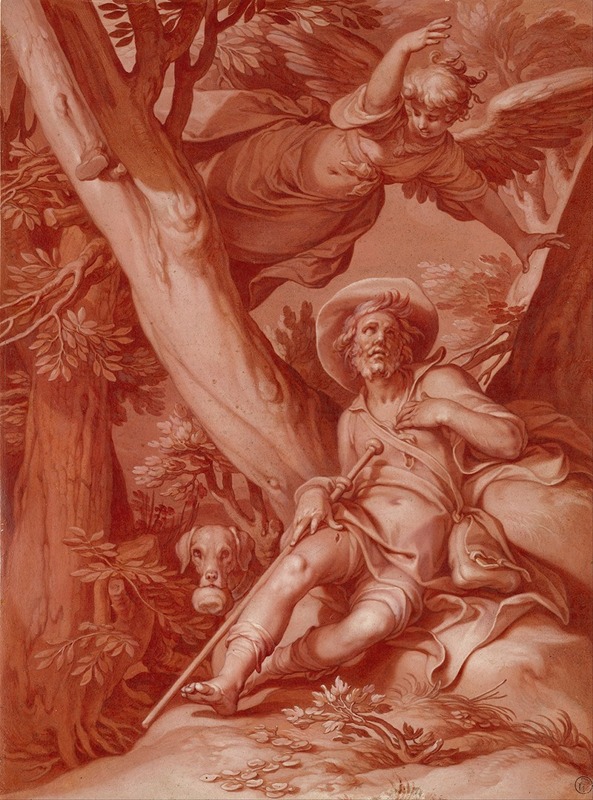
St. Roch
A hand-painted replica of Abraham Bloemaert’s masterpiece St. Roch, meticulously crafted by professional artists to capture the true essence of the original. Each piece is created with museum-quality canvas and rare mineral pigments, carefully painted by experienced artists with delicate brushstrokes and rich, layered colors to perfectly recreate the texture of the original artwork. Unlike machine-printed reproductions, this hand-painted version brings the painting to life, infused with the artist’s emotions and skill in every stroke. Whether for personal collection or home decoration, it instantly elevates the artistic atmosphere of any space.
Abraham Bloemaert's painting St. Roch is a work by the Dutch painter and printmaker, who was a prominent figure of the Dutch Golden Age. Bloemaert (1566–1651) was known for his versatility in styles, ranging from Mannerism to early Baroque, and his ability to adapt to the changing artistic trends of his time. He was also a significant teacher, influencing many artists of the Utrecht School.
The painting depicts St. Roch, a Catholic saint venerated as the patron of plague victims. St. Roch is traditionally portrayed as a pilgrim, often shown with a staff, a scallop shell (a symbol of pilgrimage), and a visible wound on his leg, referencing the plague sore that he reportedly suffered from. In many depictions, including Bloemaert's, a dog is also present, symbolizing the legend that a dog brought St. Roch bread and helped sustain him during his illness.
Bloemaert's St. Roch is characteristic of his skillful use of light and shadow, as well as his ability to convey emotion and narrative through composition. The painting reflects the religious and cultural context of the time, particularly the Catholic Counter-Reformation's emphasis on saints as intercessors and models of piety. Bloemaert's work often combined dramatic poses and gestures with a meticulous attention to detail, and St. Roch is no exception.
The exact date of the painting is not definitively documented, but it is consistent with Bloemaert's mature period, when he was producing religious works that were both devotional and didactic. The painting is an example of how Dutch artists, even in a predominantly Protestant region, continued to create Catholic-themed art, often for private patrons or Catholic communities.
Today, St. Roch by Abraham Bloemaert is recognized as an important example of his religious oeuvre. The painting is held in a museum collection, though specific details about its current location or provenance are not widely documented in public sources. Bloemaert's works, including St. Roch, are appreciated for their technical mastery and their ability to convey spiritual themes with clarity and emotional resonance.
This painting serves as a testament to Bloemaert's role in bridging the stylistic transition from Mannerism to Baroque and his contribution to the religious art of the Dutch Golden Age.


















